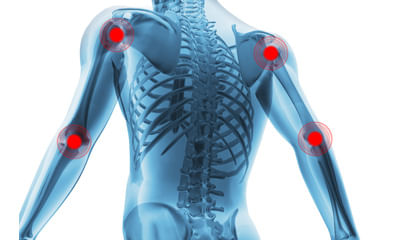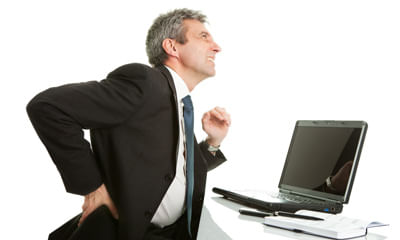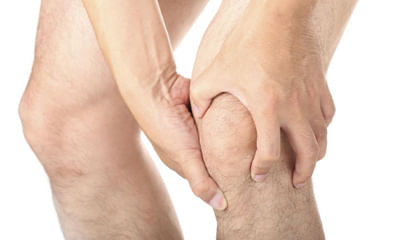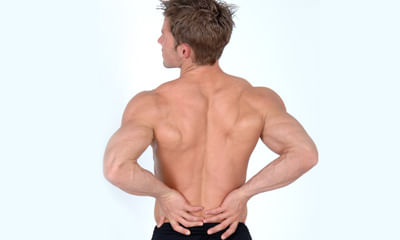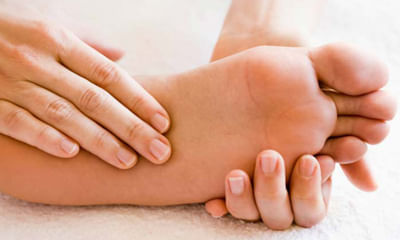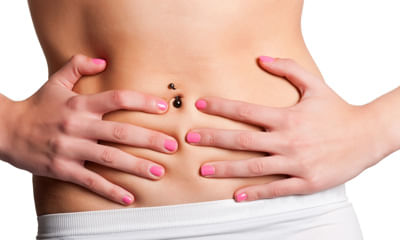Mri Side Effects Symptoms
I am a 23 years male and I go to gym regularly. Around 2 weeks back my right wrist started hurting and now if I close my ...
Ask Free Question
Hi Mr. lybrate-user. I hope you are fine. I went through the report that you have mentioned above and going through the history you have provided. I would say synovial thicvkening in sports athletes are very common especially in wrist which caused due to "over strenious work "this type of injury are very common in body builders, tennis players or any spoirts which involves maximum use of wrist. Synovial thickening is our body's response to friction caused due to inability to cope up with stress those tendons or ligaments going through. So coming to treatment part:- sports modification like using wrist support while workout, correct the position of your grip, reduce the amount of reps and repitation for 2-3 weeks to reduce load on your tendons ,give couple of days rest to it. Medications local diclo spray ,icepack is sufficient and for medications follow only on written prescription. I hope this will help. All the best.
My mri ls - spine findings: l5-s1 central, left paracentral disc protrusion indenting thecal sac with severe neural cana ...
Ask Free Question
This simple stretch helps relieve sciatica pain by loosening your gluteal and piriformis muscles, which can become inflamed and press against the sciatic nerve. 1.Lie on your back with your legs extended and your feet flexed upward. 2.Bend your right leg and clasp your hands around the knee. 3.Gently pull your right leg ac 4.Ross your body toward your left shoulder. Hold it there for 30 seconds. Remember to pull your knee only as far as it will comfortably go. You should feel a relieving stretch in your muscle, not pain. 5.Push your knee so your leg returns to its starting position. 6.Repeat for a total of 3 reps, and then switch legs. 5.sitting spinal stretch sciatica pain is triggered when vertebrae in the spine compress. This stretch helps create space in the spine to relieve pressure on the sciatic nerve. 1.Sit on the ground with your legs extended straight out with your feet flexed upward. 2.Bend your right knee and place your foot flat on the floor on the outside of your opposite knee. 3.Place your left elbow on the outside of your right knee to help you gently turn your body toward the right. 4.Hold for 30 seconds and repeat three times, then switch sides. 6. Standing hamstring stretch this stretch can help ease pain and tightness in the hamstring caused by sciatica. 1.Place your right foot on an elevated surface at or below your hip level. This could be a chair, ottoman, or step on a staircase. Flex your foot so your toes and leg are straight. If your knee tends to hyperextend, keep a slight bend in it. 2.Bend your body forward slightly toward your foot. The further you go, the deeper the stretch. Do not push so far that you feel pain. 3.Release the hip of your raised leg downward as opposed to lifting it up. If you need help easing your hip down, loop a yoga strap or long exercise band over your right thigh and under your left foot. 4.Hold for at least 30 seconds, and then repeat on the other sideif you have low back pain and sciatica you can undergo intermittent pelvic traction where in your half of your body weight will be added in the electronic traction so that that would help you to reduce the pain, along with interferential therapy stimulations which would help you to get relieved from the radiating pain. Apply ice for the pain to get subsided immediately. If you cannot go immediately for the physiotherapy treatment. Ice can be kept in the low back where you have back pain. It is suggestible to wear lumbo sacral belt which would help you to build the abdominal muscle tone which itself would make you feel better. You can also wear mcr chappals which would help you to have less weight falling in the painful back. U have to take vitamin d rich foods. Likemilk,cheese, yogurt,brocoli, spinach.u need calcium consumption for increase the bone density.
My knee hurts a lot. It has been five years. What is the solution to this? I have been prescribed voveran sr 75 tablets ...
Ask Free Question
Will need to evaluate by physical examination and diagnostic imaging like x rays/mri / blood tests. We may need to aspirate the joint if swelling is associated with pain. We need to find out the cause of pain. Do not consume painkillers for prolonged duration since it has its own side effects. Consult an orthopaedic surgeon.
Sir my rt leg got injured. 3 month ago. I have swelling on ankle and mild pain over dorsum of leg and ankle. Odema prese ...
Ask Free Question
Stretching and strengthening exercises or use of specialized devices may provide symptom relief. These include: physical therapy. A physical therapist can instruct you in a series of exercises to stretch the plantar fascia and achilles tendon and to strengthen lower leg muscles, which stabilize your ankle and heel. A therapist might also teach you to apply athletic taping to support the bottom of your foot. Night splints. Your physical therapist or doctor might recommend that you wear a splint that stretches your calf and the arch of your foot while you sleep. This holds the plantar fascia and achilles tendon in a lengthened position overnight and facilitates stretching. Orthotics. Your doctor might prescribe off-the-shelf or custom-fitted arch supports (orthotics) to help distribute pressure to your feet more evenly. Injections. Injecting a type of steroid medication into the tender area can provide temporary pain relief. Multiple injections aren't recommended because they can weaken your plantar fascia and possibly cause it to rupture. More recently, platelet-rich plasma has been used, under ultrasound guidance, to provide pain relief with less risk of tissue rupture. Lifestyle and home remediesto reduce the pain of plantar fasciitis, try these self-care tips: maintain a healthy weight. Lose weight if you're overweight or obese to minimize stress on your plantar fascia. Choose supportive shoes. Avoid high heels. Buy shoes with a low to moderate heel, good arch support and shock absorbency. Don't go barefoot, especially on hard surfaces. Don't wear worn-out athletic shoes. Replace your old athletic shoes before they stop supporting and cushioning your feet. If you're a runner, buy new shoes after about 400 to 500 miles of use. Change your sport. Try a low-impact sport, such as swimming or bicycling, instead of walking or jogging. Apply ice. Hold a cloth-covered ice pack over the area of pain for 15 to 20 minutes three or four times a day or after activity. Or try ice massage. Freeze a water-filled paper cup and roll it over the site of discomfort for about five to seven minutes. Regular ice massage can help reduce pain and inflammation. Stretch your arches. Simple home exercises can stretch your plantar fascia, achilles tendon and calf muscles. Prevention: maintain a healthy weight. Choose supportive shoes. Don't wear worn-out shoes. Heel pain apply ice use an ice pack or cold compress on your foot for 10 to 15 minutes at a time. This is especially beneficial at the end of a long day or when you’ve spent a lot of time on your feet. Or, roll a frozen water bottle under your foot. This method incorporates a bit of massage, relieving tightness in the bottom of your foot. Massage. Massaging the arch of your foot helps to relieve pain and promote mobility. Use your fingers and knuckles to deeply massage your foot for 1 to 5 minutes at a time. One technique is to place both thumbs at the center line of your arch and move them to the outer edges of your feet. Inserts. Use cushion inserts in your shoes for additional support and cushioning. Inexpensive options can be purchased off the shelf. Wear supportive shoes with thicker soles and extra cushioning for additional support that can help to reduce tension in the plantar fascia. Kinesiology tape can be used to improve arch and heel support. Night splints. Many people find quick and effective results by using night splints. They can be worn while sleeping to stretch the plantar fascia. They help to keep the plantar fascia relaxed and prevent you from pointing your feet down. Exercise foot flex use your hand to pull your toes back toward your shin. Hold this position for about 30 seconds .do each side two to three times. Toe towel grab place a small towel under your foot. Curl your toes to grip the towel. Raise the front of your foot off the floor. Hold this position for a few seconds. Release the towel as you lift up your toes and spread them as far apart as possible. Heel and calf stretch to do this stretch: 1.stand facing a wall. 2.place your hands on the wall and move one foot back as far as you can comfortably. Toes on both feet should be facing forward, heels flat, with a slight bend in your knees. 3.lean into the stretch and hold for 30 seconds. You should feel the stretch in your back leg. 4.change legs and repeat. 5.do this stretch twice for both legs. Golf ball roll roll a golf baell under your right foot. Continue for up to 1 minute. Do each foot two to three times.
I am suffering from back pain from 1.5 year pain is only in lower back not in legs in mri my l4 l5 is 8.5 if I play cric ...
Ask Free Question
Back pain can have causes that aren't due to underlying disease. Examples include overuse such as working out or lifting too much, prolonged sitting and lying down, sleeping in an uncomfortable position or wearing a poorly fitting backpack. Doing exercises to strengthen the lower back can help alleviate and prevent lower back pain. It can also strengthen the core, leg, and arm muscles. Exercise also increases blood flow to the lower back area, which may reduce stiffness and speed up the healing process. Below are exercises that strengthen the lower back and help manage lower back pain: url/articles/323204. Php#seated-lower-back-rotational-stretches 1. Bridges—lie on the ground and bend the knees, placing the feet flat on the floor hip-width apart. Press the feet into the floor, keeping the arms by the sides. Raise the buttocks off the ground until the body forms a straight line from the shoulders to the knees. Squeeze the buttocks with the shoulders remaining on the floor. Lower the buttocks to the ground and rest for a few seconds.Repeat 15 times and then rest for 1 minute.Do 3 sets of 15 repetitions.2. Knee-to-chest stretches— lie on the back on the floor. Bend the knees, keeping both feet flat on the floor. Use both hands to pull one knee in toward the chest. Hold the knee against the chest for 5 seconds, keeping the abdominals tight and pressing the spine into the floor. Return to the starting position.Repeat with the opposite leg.Repeat with each leg 2–3 times twice a day. 3. Lower back rotational stretches—lie back on the floor with bent knees and feet flat on the ground. Keeping the shoulders firmly on the floor, gently roll both bent knees over to one side. Hold the position for 5–10 seconds. Return to the starting position. Gently roll the bent knees over to the opposite side, hold, and then return to the starting position. Repeat 2–3 times on each side twice a day. 4. Draw-in maneuvers— lie back on the floor with knees bent and feet flat, keeping the arms by the sides. Breathe in deeply. While breathing out, pull the bellybutton toward the spine, tightening the abdominal muscles and keeping the hips still. Hold the position for 5 seconds. Repeat 5 times. 5. Pelvic tilts— lie back on the floor with knees bent and feet flat, keeping the arms by the sides. Gently arch the lower back and push the stomach out. Hold for 5 seconds, then relax. Flatten the back and pull the bellybutton in toward the floor. Hold for 5 seconds, then relax. Increase the number of repetitions daily, building up to 30. 6. Lying lateral leg lifts— lie on one side with the legs together. Keep the lower leg slightly bent. Draw the bellybutton into the spine to engage the core muscles. Raise the top leg about 18 inches, keeping it straight and extended. Hold the position for 2 seconds. Repeat 10 times. Turn onto the other side of the body and repeat, lifting the other leg. Perform 3 sets on each side. 7. Cat stretches— get onto the hands and knees with the knees hip-width apart. Arch the back, pulling the bellybutton up toward the spine. Slowly relax the muscles and allow the abdomen to sag toward the floor. Return to the starting position. Repeat 3–5 times twice a day. 8. Supermans— lie face down on the ground and stretch both arms out in front of the body, keeping the legs stretched out and flat on the ground. Raise both the hands and feet, aiming to create a gap of about 6 inches between them and the floor. Try to pull in the bellybutton, lifting it off the floor to engage the core muscles. Keep the head straight and look at the floor to avoid neck injury. Stretch the hands and feet outward as far as possible. Hold the position for 2 seconds. Return to the starting position. Repeat 10 times. For this homeopathic treatment is very effective consult online with details.
Hello I am 24 year I have numbness and tingling sensation in my left side thigh this problem facing last six months afte ...
Ask Free Question
Report check and summary. Satya kishor sharma hello I have some report I want to you check and give me information about report. Hello! i'll do my best to help you. What kind of report do you have? Can you give me more details about it? Satya kishor sharma hello I am 24 year I have numbness and tingling sensation in my left side thigh this problem facing last six months after my pregnancy delivery once I visited neurologist he recommended me mri and prescribed medicine tab duloxetine 30 mg and tab methylcobalamin+gabapentin (500/300 mg) but still I have no improvement in my problem please suggest effective treatment. Based on the symptoms you have described, it's possible that you are experiencing a condition called meralgia paresthetica, which is a type of nerve compression syndrome that affects the lateral femoral cutaneous nerve in the thigh. The medication prescribed to you by the neurologist, duloxetine and methylcobalamin+gabapentin, are commonly used to treat nerve pain and may help alleviate some of your symptoms. However, it's important to note that it may take several weeks for these medications to take effect. In addition to medication, there are some other treatments that may help relieve your symptoms: physical therapy: working with a physical therapist can help to stretch and strengthen the muscles surrounding the affected nerve, which can help to reduce pressure on the nerve and alleviate symptoms. Nerve blocks: a nerve block involves injecting a local anesthetic directly into the affected nerve to temporarily block the pain signals. Surgery: in rare cases, surgery may be necessary to relieve pressure on the affected nerve. It's important to follow up with your neurologist and discuss these treatment options to determine the best course of action for you. Additionally, it may be helpful to discuss any lifestyle changes that may be contributing to your symptoms, such as sitting for prolonged periods of time or wearing tight clothing. Get mri done and take further opinion from doctor.
Hello doctor, i've noticed these blisters are growing slowly and new blisters are also growing. I don't know what is the ...
Ask Free Question
Report check and summary. Satya kishor sharma hello I have some report I want to you check and give me information about report. Hello! i'll do my best to help you. What kind of report do you have? Can you give me more details about it? Satya kishor sharma hello I am 24 year I have numbness and tingling sensation in my left side thigh this problem facing last six months after my pregnancy delivery once I visited neurologist he recommended me mri and prescribed medicine tab duloxetine 30 mg and tab methylcobalamin+gabapentin (500/300 mg) but still I have no improvement in my problem please suggest effective treatment. Based on the symptoms you have described, it's possible that you are experiencing a condition called meralgia paresthetica, which is a type of nerve compression syndrome that affects the lateral femoral cutaneous nerve in the thigh. The medication prescribed to you by the neurologist, duloxetine and methylcobalamin+gabapentin, are commonly used to treat nerve pain and may help alleviate some of your symptoms. However, it's important to note that it may take several weeks for these medications to take effect. In addition to medication, there are some other treatments that may help relieve your symptoms: physical therapy: working with a physical therapist can help to stretch and strengthen the muscles surrounding the affected nerve, which can help to reduce pressure on the nerve and alleviate symptoms. Nerve blocks: a nerve block involves injecting a local anesthetic directly into the affected nerve to temporarily block the pain signals. Surgery: in rare cases, surgery may be necessary to relieve pressure on the affected nerve. It's important to follow up with your neurologist and discuss these treatment options to determine the best course of action for you. Additionally, it may be helpful to discuss any lifestyle changes that may be contributing to your symptoms, such as sitting for prolonged periods of time or wearing tight clothing. Satya kishor sharma hello doctor, i've noticed these blisters are growing slowly and new blisters are also growing. I don't know what is the exact problem and cause for this. Please guide me through this. I'm sorry to hear that you're experiencing blisters that are growing and spreading. There are many potential causes of blisters, so it's important to have a healthcare provider examine them to determine the underlying cause and recommend appropriate treatment. Measures to help prevent further irritation or friction on the affected area, such as using cushioned insoles in shoes or wearing gloves.
Hi I wanted to know if I have spinal stenosis? Previous mri said I had narrowing current mri saying l4 l5 is extending i ...
Ask Free Question
Back pain exerciseskindly do these exercises. Plank the world record for the longest plank is 8 hours. Luckily, you don’t need to hold it that long for the exercise to have an effect! in fact. You can hold it for 10-15 seconds. • the plank is similar to a push-up position, but instead of resting on your hands, you rest on your elbows and bring them directly underneath your chest. • after kneeling, lean forward and place your elbows on the ground directly below your shoulders. • lift your knees off of the floor and push your feet back. Ensure your back is straight and keep your neck aligned with the rest of your spine. • hold the position and tighten your core muscles for the desired time. 2. Side plank just like the original plank, but only balancing on one side. • lie on the floor on your side, facing sideways with your feet together. • lift up your body until you are supporting yourself with your elbow, directly below your shoulder. • raise your hips until your body is in a straight line and tighten your core muscles; your body should create a slant from your shoulders to your feet. • hold this position without dropping your hips. • repeat on the opposite side. 3. Pelvic tilt with exercise ball sit on a ball that allows your legs to be at a 90-degree angle with your feet flat on the floor. • keep your shoulders back and spine straight. • tilt your hips forward and flex your abdominals tight. • tilt your hips backward as you stick your tailbone out. • move back and forth slowly, keeping your shoulders back. • repeat 10 times for 3 sets. 4. Superman lie on your stomach, face down, with your arms out in front of you. • lift arms, legs, and chest off the floor simultaneously while keeping your hips grounded. • hold for a minimum of two seconds. • lower back down slowly. • repeat 10 times for 3 sets. 6. Crunches lie flat on your back, placing your feet flat on the floor with your legs bent. • fold your arms across your chest and lift your torso up until your head, neck, and torso are off the ground. • hold for a moment before lowering back down. • repeat. 6. Quadruped arm opposite leg raises • kneel on the floor, lean forward, and place your hands palm-down on the floor. • make sure your back is straight, your knees are below your hips, and that your palms are directly below your shoulders. • raise one arm as you raise the opposite leg until both are aligned straight out from your body, parallel to your spine. • slowly lower both your arm and leg until you are back in the starting position. • switch arm and leg, and repeat. 7. Dead bug lie flat on the floor on your back. • lift your arms straight up from your body, reaching through the air. • raise one leg until it is at a 90-degree angle from your body. • slowly lower until it is in the starting position. • switch legs and repeat. 8. Hip bridge lie on your back with your knees bent and raised, your feet flat on the floor, and your arms at your sides. • keep your feet hip-distance apart and try to keep your leg in vertical alignment with your knee. • flex your glutes and push through your heels to raise your hips upward. Try to make a diagonal line from your shoulders to your knees. • hold for a short moment before lowering back down. • repeat 10 times for 3 sets. Herniated disc 1. Spinal decompression how it helps – spinal decompression should be the very first thing you do to treat a herniated or bulging disc because it essentially creates space between your vertebrae, and thus takes pressure off the discs. How to do it – use a bar or the top of a door (or anything you can hang from) and allow your body to “just hang”. – hang for 30 seconds and do 3 sets. – release very slowly from this so as not to cause any spasms. ** this should not cause any pain. If you feel pain during it is not a good one for you. In that case, stop and try some of the other exercises below instead. 2. Standing extension how it helps – this standing extension helps reverse what you do on a daily basis (hunching)… since most bulging discs and herniated discs are caused by poor posture and repeated flexion of the spine (esp bending fwd in bad posture), this stretch helps push the disc back to neutral position. How to do it – begin this exercise by standing up with good posture. Now take both hands and place them on both sides of your lower back. Now with the help of your hands push your pelvis forward and extend your spine back. Follow the extension with your neck so that you end up facing the ceiling. – start with 10 repetitions and do 2-3 sets. – this one is particularly great to do when you need a break from sitting at your desk. ** this should not cause any pain. If you feel pain during it is not a good one for you. In that case, stop and try some of the other exercises below instead. 3. Half cobra pose (prone lumbar extension) how it helps – the half cobra stretch helps to push the disc material back towards the center of the inter-vertebral disc to allow for improved healing. The goal of repeated lower back extension is the “centralization of symptoms”, which basically means pain that travels down the affected leg to the foot should come back up closer to the low back – which will in turn alleviate the pain. How to do it – begin this exercise by lying on your stomach (prone position) and slowly prop yourself up on your elbows while keeping your hips in contact with the floor. – hold the prop-up position for 10-15 seconds before returning to the prone position (lying face down). – gradually increase to holding the end position for 30 seconds. Aim for 10 repetitions of this stretch. ** initially, you may not be able to tolerate this position very well, so make sure you start slowly and carefully. If there’s any pain, try a different exercise instead. 4. Full cobra pose (advanced extension) how it helps – this stretch is based on the same principle as the half cobra pose above. This advanced extension helps to push disc material back towards the center of the intervertebral disc, with the goal of alleviating pain symptoms. How to do it – once you’ve mastered the half cobra pose, you can increase the difficulty by moving to the advanced version of this stretch. Begin this exercise by lying on your stomach in the prone position (lying facing down) and slowly press up on your hands while keeping your pelvis in contact with the floor and lower back relaxed. – hold the prop-up position for 10 seconds. Aim for 10 repetitions of this stretch. – eventually try to hold this pose for longer if it feels good (20-30 seconds). ** if you feel pain during this exercise, it is not a good one for you. In that case, stop and try some of the other exercises instead. 5. Cat-cow how it helps – this is one of the most popular herniated disc exercises. By combining two yoga poses, the cat-cow stretch can help to relieve pressure on the herniated disc by opening the intervertebral disc space. It also improves mobility of the spine, which may help to relieve disc herniation pain and speed recovery. How to do it – begin this stretch on your hands and knees. Inhale and let your stomach “drop” towards the floor as you look up towards the ceiling. – follow this by exhaling and slowly rounding your spine while pressing into the floor with your hands and slightly curving your neck to look at your feet. – aim for 10 repetitions of this stretch and do 2-3 sets. How it helps – this exercise will help strengthen and stabilize your lower back and deep spine muscles. This will help you to maintain a good posture and avoid future episodes of herniated discs. How to do it: – begin on your hands and knees with your hands positioned under your shoulders and knees positioned under your hips. – raise your left arm and reach it forwards until it is aligned with your torso; at the same time, kick your right leg backwards until is it aligned with your torso. – hold this position for 2-3 seconds before slowly returning to the starting position. – repeat with your right arm and left leg. – alternate sides for 10 repetitions and do 2-3 sets. ** ensure that your head, neck, and back maintain a neutral alignment to minimize stress on your neck. Plank: how it helps – just like the bird dog, this “core” exercise will help bring your pelvis into right position by strengthening the deep spinal muscles and glutes (butt muscles). How to do it – begin lying on your stomach with your forearms against the mat. – engage your core and lift your body so that you are resting on your forearms and toes. – start with 10 second holds and work up to 30 second holds, do 2-3 sets. ** ensure to keep your back straight throughout the entire exercise – spine in neutral position. Thoracic expansion if you’re using a chair, sit facing forward and allow your upper body to fall over the back of the chair. Extend your arms above your head for a deeper stretch. Hold either position for 10 seconds and release. Repeat 3 times. .sitting spinal stretch sciatica pain is triggered when vertebrae in the spine compress. This stretch helps create space in the spine to relieve pressure on the sciatic nerve. 1.sit on the ground with your legs extended straight out with your feet flexed upward. 2.bend your right knee and place your foot flat on the floor on the outside of your opposite knee. 3.place your left elbow on the outside of your right knee to help you gently turn your body toward the right. 4.hold for 30 seconds and repeat three times, then switch sides. 6. Standing hamstring stretch this stretch can help ease pain and tightness in the hamstring caused by sciatica. 1.place your right foot on an elevated surface at or below your hip level. This could be a chair, ottoman, or step on a staircase. Flex your foot so your toes and leg are straight. If your knee tends to hyperextend, keep a slight bend in it. 2.bend your body forward slightly toward your foot. The further you go, the deeper the stretch. Do not push so far that you feel pain. 3.release the hip of your raised leg downward as opposed to lifting it up. If you need help easing your hip down, loop a yoga strap or long exercise band over your right thigh and under your left foot. 4.hold for at least 30 seconds, and then repeat on the other sideif you have low back pain and sciatica you can undergo intermittent pelvic traction where in your half of your body weight will be added in the electronic traction so that that would help you to reduce the pain, along with interferential therapy stimulations which would help you to get relieved from the radiating pain. Apply ice for the pain to get subsided immediately. If you cannot go immediately for the physiotherapy treatment. Ice can be kept in the low back where you have back pain. It is suggestible to wear lumbo sacral belt which would help you to build the abdominal muscle tone which itself would make you feel better. You can also wear mcr chappals which would help you to have less weight falling in the painful back. U have to take vitamin d rich foods. Likemilk, cheese, yogurt, brocoli, spinach. U need calcium consumption for increase the bone density. Lackof bone and bones crush inside the body vitamin d intake via supplements or exposure to low levels of sunlight. Vitamin d is used to absorb calcium in the bone and regulate calcium in the blood.this might be due to low calcium or vitamin d which has more impact on the bone density and also it makes one to feel that there is lack of bone strength or in a way the bones are brittle and almost breaking and they feel it is crushed in a way there are many bones breaking at the same time. You have to take vitamin d rich foods. Likemilk, cheese, yogurt, brocoli, spinach. U need calcium consumption for increase the bone d.
I can't poop fully. There is poop still remain in anus. I had rectal pain and burning. Sometimes I have poop with mucus ...
Ask Free Question
Are you constipated? 1. Take home cooked, fresh light food. Take a lot of green vegetables n fruit. 2. Increase the fibre in your diet 3. Increase your fluid intake 4. Avoiding straining and constipation which is the most useful thing patients can do to prevent the problem coming back. 5. Maintain active life style 6. Curd is good for u. 7. Avoid fast foods, spicy n fried foods homeopathy is a very effective for this problem n has very encouraging results. And homeopathic medicines are safe and do not have any side effects at all.
I had pain in the rotator cuff of my left shoulder for almost a year now. My mri shows periarthritis and degeneration. D ...
Ask Free Question
Rotator cuff tear: the rotator cuff is a group of four muscles and tendons that help stabilize the shoulder. They also aid in movement. Every time you move your shoulder, you are using your rotator cuff to stabilize and help move the joint. The rotator cuff is a commonly injured area. The most common injuries are strains, tendinitis, and bursitis. Causes: rotator cuff injuries can range from mild to severe. They tend to fall into one of three categories. Tendinitis is an injury caused by overuse of the rotator cuff. This causes it to become inflamed. Tennis players, who use an overhead serve and painters who have to reach upward to do their jobs commonly experience this injury. Bursitis is another common rotator cuff injury. It’s caused by inflammation of the bursa. These are fluid-filled sacs that sit between the rotator cuff tendons and the underlying bone. Rotator cuff strains or tears are caused by overuse or acute injury. The tendons that connect muscles to bones can overstretch (strain) or tear, partially or completely. The rotator cuff can also strain or tear after a fall, a car accident, or another sudden injury. These injuries typically cause intense and immediate pain. Symptoms: not all rotator cuff injuries cause pain. Some are the result of degenerative conditions, meaning the rotator cuff could be damaged for months or years before symptoms start to appear. Common rotator cuff injury symptoms include: •avoiding certain activities because they cause pain •difficulty achieving full range of shoulder motion •difficulty sleeping on the affected shoulder •pain or tenderness when reaching overhead •pain in the shoulder, especially at night •progressive weakness of the shoulder •trouble reaching behind the back if you’ve been experiencing any of these symptoms for longer than a week or lose function in your arm, see your doctor. Risk: rotator cuff injuries can be acute or degenerative. Acute injuries usually occur from one particular incident. These can be caused by lifting objects that are too heavy, falling, or having the shoulder forced into an awkward position. Young people are more likely to experience this type of rotator cuff injury. Degenerative injuries are due to long-term overuse. People most at risk for these injuries include: •athletes, particularly tennis players, baseball players, rowers, and wrestlers •people with jobs that require repetitive lifting, such as painters and carpenters •people above 40 years of age treated: treatments range from resting the affected arm to surgery. Tendinitis can progress to a rotator cuff tear, and that injury can get worse with time. Seeking treatment as quickly as possible helps keep the injury from progressing. Nonsurgical treatments improve symptoms in about 50 percent of people with a rotator cuff injury. These kinds of treatments include: •applying hot or cold packs to the affected shoulder to reduce swelling •exercises to restore strength and range of motion •injecting the affected area with cortisone, a steroid that helps to reduce inflammation •resting the affected arm and wearing a sling to isolate arm motions •over-the-counter anti-inflammatory medications, such as ibuprofenand naproxen prevented: athletes and people with occupations that require using the shoulder should take frequent rest breaks. This can reduce the load on the shoulder. Exercises to strengthen the shoulder and encourage range of motion also can help. Ask your physical therapist for stretches and strengthening exercise to improve the function of your rotator cuff. In the case of shoulder pain, icing the affected area can help reduce swelling. Apply ice in a cloth-covered pack for no more than 10 minutes at a time. These activities can also help prevent re-injury. First aid for muscle strains:most muscle strains can be successfully treated at home. Mi nor muscle strains can be treated with rest, ice, compression, and elevation (rice). Rest avoid using your muscle for a few days, especially if movement causes an increase in pain. But too much rest can cause muscles to become weak. This can prolong the healing process. After two days, slowly begin using the affected muscle group, taking care not to overdo it. Ice apply ice immediately after injuring your muscle. This will minimize swelling. Don’t put ice directly on your skin. Use an ice pack or wrap ice in a towel. Keep the ice on your muscle for about 20 minutes. Repeat every hour on the first day. For the next several days, apply ice every four hours. Compression to reduce swelling, wrap the affected area with an elastic bandage until swelling comes down. Be careful not to wrap the area too tightly. Doing so can reduce your blood circulation. Elevation whenever possible, keep the injured muscle raised above the level of your heart.

